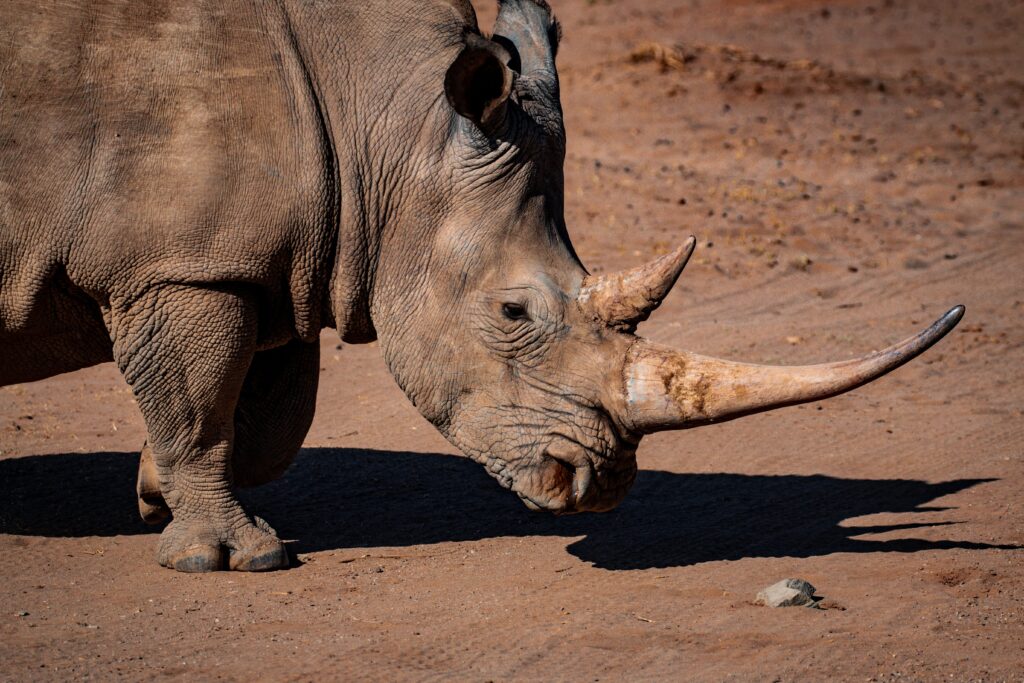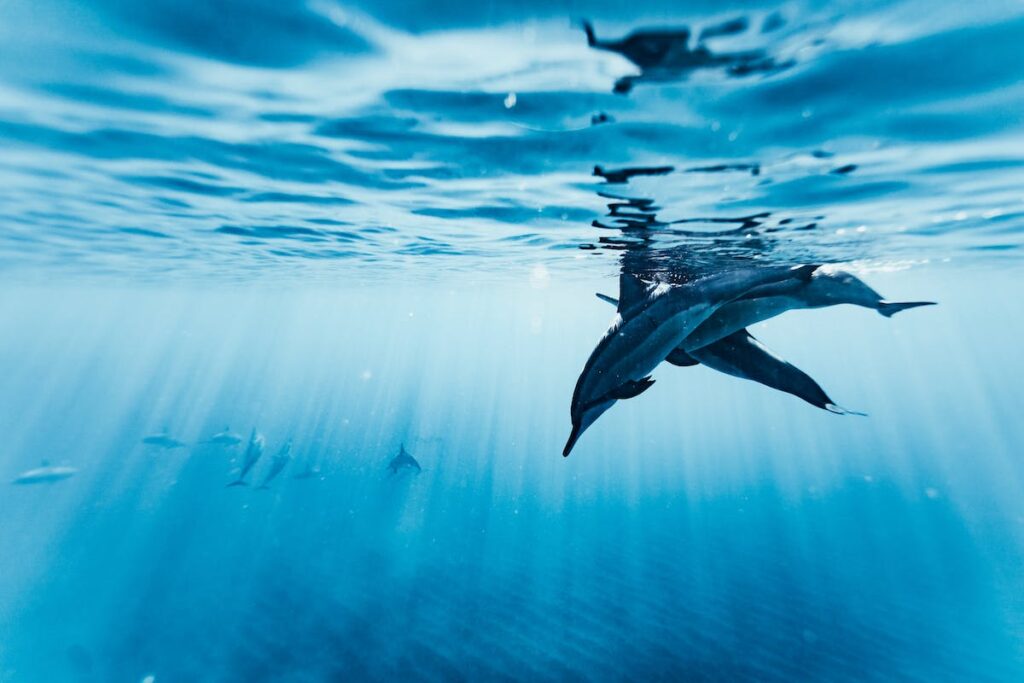Conservation Strategies for Endangered Species: 8 Ways to Invest in a Sustainable Path to Profitability
Introduction:
The alarming decline in biodiversity and the increasing threat of extinction faced by numerous species highlight the urgent need for robust conservation strategies.
It is essential to reflect on the progress made in safeguarding endangered species in the past and explore innovative approaches to address the challenges ahead.

Understanding the Challenges:
Endangered species face a myriad of threats, ranging from habitat loss and fragmentation to climate change, pollution, and illegal poaching.
Conservation efforts must be multifaceted, considering the complex interplay of these factors.
Moreover, the inherent interconnectedness of ecosystems underscores the importance of a holistic approach to wildlife preservation.
Conservation Strategies:
- Habitat Restoration and Protection: Preserving and restoring natural habitats is crucial for the survival of endangered species. Conservationists must work to protect existing habitats from further degradation while actively restoring those that have been damaged. This involves not only safeguarding designated reserves but also promoting sustainable land-use practices in surrounding areas.
- Community Involvement: Engaging local communities in conservation efforts is paramount. Building awareness, providing education, and establishing partnerships with indigenous peoples can foster a sense of shared responsibility. When local communities benefit from conservation initiatives, they are more likely to become stewards of their natural resources.
- Technology and Data-driven Conservation: Harnessing the power of technology, such as satellite monitoring, camera traps, and genetic analysis, enhances our ability to track and protect endangered species. These tools provide valuable data for informed decision-making, allowing conservationists to tailor strategies to the specific needs of each species.
- Legislation and Policy Development: Enacting and enforcing stringent wildlife protection laws is essential for curbing illegal activities such as poaching and trafficking. Governments, in collaboration with international organizations, must prioritize the development and implementation of policies that safeguard both habitats and the species that inhabit them.
- Conservation Breeding and Reintroduction Programs: Managed breeding programs in captivity, combined with strategic reintroduction into the wild, have proven effective for certain species. This approach aims to bolster dwindling populations, reduce inbreeding, and establish new viable colonies in suitable habitats.
- Climate Change Mitigation and Adaptation: Climate change poses a significant threat to many species, altering their habitats and migration patterns. Conservation efforts must include strategies to mitigate the impacts of climate change and help species adapt to these changing conditions.
- International Collaboration: Endangered species often traverse national borders, emphasizing the need for global cooperation. International collaborations between governments, non-governmental organizations, and research institutions can pool resources, expertise, and funding to address conservation challenges on a larger scale.

Conservation strategies must evolve to meet the dynamic challenges faced by our planet’s biodiversity.
By combining habitat protection, community involvement, technological innovation, and global cooperation.
We can forge a path towards a sustainable future where endangered species not only survive but thrive in their natural habitats.
The journey ahead requires a concerted effort from individuals, communities, and nations alike, united in the shared goal of preserving the rich tapestry of life on Earth.
Investing in Conservation Strategies for Endangered Species: A Sustainable Path to Profitability
As the urgency to protect endangered species grows, a unique opportunity arises for investors to contribute to conservation efforts while also reaping financial benefits.
This article explores the investment landscape in conservation strategies for endangered species, shedding light on how sustainable practices can translate into profitability.
- Eco-Tourism Ventures: Investing in eco-tourism initiatives centered around endangered species and their habitats can yield substantial returns. Well-managed wildlife reserves and sanctuaries attract eco-conscious tourists, creating a sustainable revenue stream. By offering responsible and educational experiences, these ventures simultaneously contribute to conservation goals.
- Biodiversity Offsetting Programs: Companies are increasingly recognizing the importance of offsetting their environmental impact through biodiversity offset programs. Investors can support and profit from initiatives that focus on restoring and preserving habitats, which can be monetized as businesses seek to fulfill their corporate social responsibility commitments.
- Conservation-Focused Technology Solutions: The development and implementation of technology-driven solutions for conservation, such as wildlife monitoring systems and anti-poaching technologies, present lucrative investment opportunities. These innovations not only contribute to species protection but also tap into a growing market for sustainable and ethical tech solutions.
- Sustainable Agriculture and Land Use: Investments in sustainable agriculture practices that minimize habitat destruction can be both profitable and environmentally beneficial. Companies adopting eco-friendly farming methods contribute to habitat preservation while meeting the increasing demand for ethically sourced products.
- Carbon Offset and Climate Mitigation Projects: Conservation efforts often intersect with climate change mitigation. Investors can explore opportunities in projects that focus on carbon sequestration, afforestation, and renewable energy. These initiatives contribute to both ecosystem health and the global fight against climate change.
- Conservation Real Estate Development: Investing in the development of conservation-focused real estate, such as sustainable lodges or residential areas with a commitment to habitat protection, can attract environmentally conscious buyers. This approach aligns profitability with a dedication to preserving natural landscapes.
- Conservation Impact Funds: Dedicated impact funds focusing on conservation and biodiversity offer a channel for investors seeking both financial returns and positive environmental outcomes. These funds support a range of projects, from species-specific conservation to broader ecosystem protection initiatives.
- Collaborative Partnerships with NGOs: Strategic partnerships with reputable non-governmental organizations (NGOs) engaged in conservation can provide investors with opportunities to support impactful projects. Such collaborations not only enhance credibility but also offer insights and expertise crucial for successful and sustainable investments.
Investing in conservation strategies for endangered species is not only a morally sound decision but also a financially astute one.
As the world increasingly recognizes the interconnectedness of environmental well-being and economic prosperity.
Opportunities abound for investors to align their financial goals with the imperative of preserving biodiversity.
By making informed, ethical investment choices, individuals and businesses can play a pivotal role in creating a sustainable future where profitability and conservation go hand in hand.
Investing in conservation through reputable non-governmental organizations (NGOs) provides a unique avenue for investors to make a positive impact on the environment while potentially achieving financial returns.
Here are five important NGOs that investors could consider approaching for profitable investment opportunities in the conservation sector:
- World Wildlife Fund (WWF): The World Wildlife Fund is a globally recognized NGO dedicated to wildlife conservation and sustainable practices. Investors can explore partnerships with WWF to support projects ranging from habitat protection to innovative conservation initiatives. Collaborating with WWF may offer insights into sustainable practices that align with both environmental and financial goals.
- The Nature Conservancy: The Nature Conservancy is known for its science-driven approach to conservation, emphasizing the protection of critical ecosystems. Investors interested in sustainable land use and biodiversity preservation can explore opportunities with The Nature Conservancy, which often engages in projects that combine conservation with responsible economic development.
- Wildlife Conservation Society (WCS): WCS operates on a global scale, focusing on protecting wildlife and wild places. Investors can consider supporting WCS initiatives that involve community-based conservation, technology-driven solutions, and the establishment of protected areas. Such investments may contribute to both environmental stewardship and potential financial returns.
- Rainforest Foundation: For investors interested in tropical conservation and rainforest protection, the Rainforest Foundation offers investment opportunities aligned with preserving some of the world’s most biodiverse regions. Investments may include sustainable development projects, anti-deforestation initiatives, and support for indigenous communities.
- Conservation International: Conservation International emphasizes the importance of nature in addressing global challenges. Investors can explore opportunities with Conservation International, which collaborates with governments, businesses, and local communities to implement conservation strategies. Projects may involve sustainable resource management, climate change mitigation, and the protection of vital ecosystems.
Before approaching these NGOs for investment opportunities, investors should thoroughly research each organization’s projects,
financial transparency, and track record. Due diligence is crucial to ensuring that the investment aligns with both conservation goals and the investor’s financial objectives.
Additionally, engaging in open communication with the NGOs will provide a better understanding of the potential returns and the long-term impact of the investment on conservation.
Identifying Strategic Wildlife Conservation Locations
Identifying and prioritizing strategic wildlife conservation locations is crucial for global efforts to preserve biodiversity.
Here are 10 major strategic wildlife conservation locations around the globe:
- Galápagos Islands, Ecuador: Renowned for its unique and diverse ecosystems, the Galápagos Islands are home to numerous endemic species. Conservation efforts focus on protecting marine life, such as the iconic Galápagos tortoises and marine iguanas, from threats like invasive species and climate change.
- Yellowstone National Park, USA: Yellowstone, the first national park in the world, is a stronghold for wildlife conservation. It provides a refuge for endangered species like gray wolves and grizzly bears. Ongoing efforts focus on maintaining healthy ecosystems, preserving habitats, and managing human-wildlife conflicts.
- Great Barrier Reef, Australia: The Great Barrier Reef, the largest coral reef system globally, is critical for marine biodiversity. Conservation initiatives target coral reef health, sustainable fishing practices, and climate change mitigation to protect this UNESCO World Heritage site.
- Serengeti National Park, Tanzania: The Serengeti is famous for the annual wildebeest migration and is a vital conservation area for African wildlife. Efforts concentrate on anti-poaching measures, habitat protection, and community engagement to ensure the survival of iconic species like lions, elephants, and rhinoceroses.
- Amazon Rainforest, South America: The Amazon Rainforest is a biodiversity hotspot, housing a staggering array of plant and animal species. Conservation efforts aim to combat deforestation, address illegal logging, and protect indigenous territories to safeguard the incredible diversity within this vital ecosystem.
- Kruger National Park, South Africa: Kruger National Park is a cornerstone of wildlife conservation in Africa, home to the Big Five (lion, leopard, rhinoceros, elephant, and Cape buffalo). Conservation strategies focus on anti-poaching, habitat restoration, and community involvement to ensure the park’s long-term sustainability.
- Komodo Island, Indonesia: Known for its Komodo dragons, the world’s largest lizards, Komodo Island is a UNESCO World Heritage site. Conservation efforts concentrate on protecting the unique biodiversity, managing tourism, and preserving the habitats of both the Komodo dragon and marine life.
- Arctic National Wildlife Refuge, USA: The Arctic National Wildlife Refuge is a critical habitat for various species, including polar bears and migratory birds. Conservation initiatives aim to balance oil and gas development with wildlife protection, emphasizing sustainable practices in this fragile Arctic ecosystem.
- Madagascar: Madagascar is an island nation known for its high level of endemism. Conservation projects target the protection of lemurs, chameleons, and other unique species threatened by habitat loss and illegal logging.
- Everglades National Park, USA: The Everglades, a unique wetland ecosystem, faces challenges from habitat degradation and invasive species. Conservation efforts focus on restoring natural water flow, controlling invasive species, and supporting the recovery of endangered species like the Florida panther.

These strategic wildlife conservation locations represent diverse ecosystems and play a crucial role in preserving the planet’s biodiversity.
Collaborative and sustained efforts are essential to ensuring the long-term survival of these ecosystems and the species they harbor.
CONCLUSION
The imperative to implement robust conservation strategies for endangered species transcends the realm of moral responsibility;
It is an essential commitment to the very fabric of our shared existence on this planet. As we celebrate the one-year milestone of advocating for the preservation of biodiversity.
It becomes unequivocally clear that the journey towards a sustainable future demands unwavering dedication, innovation, and collective action.
Embarking on some cutting-edge Conservation Strategies is not a solitary endeavor but a shared responsibility that extends across nations, communities, and individuals.
The challenges we face in safeguarding endangered species are multifaceted, encompassing habitat loss, climate change, poaching, and a myriad of interconnected threats.
However, within these challenges lie opportunities—opportunities for transformative change, pioneering technologies.
And novel approaches to harmonize the delicate balance between human progress and the preservation of our natural heritage.
Habitat restoration emerges as a cornerstone strategy, acknowledging the intrinsic link between thriving ecosystems and the survival of species.
Yet, it is not solely the responsibility of conservationists and scientists but a call for comprehensive policy reforms that prioritize sustainable land use and protection of critical habitats.
The involvement of local communities is not just a peripheral consideration;
It is the linchpin that fortifies the bridge between conservation and livelihoods, ensuring that the benefits of preserving biodiversity extend far beyond ecological boundaries.
Technology, with its relentless march forward, provides a formidable ally in the fight against extinction.

From satellite monitoring to advanced genetic analysis, our arsenal is expanding, offering unprecedented insights into the lives of endangered species.
This technological prowess is not just a tool for surveillance but a beacon of hope, guiding us towards data-driven decision-making and targeted interventions that hold the promise of reversing the tide of decline.
Legislation and policy development stand as pillars of strength, reinforcing the framework within which conservation operates.
Governments, in collaboration with international entities, must champion the cause of wildlife protection.
Enacting stringent laws that serve as deterrents to illegal activities while fostering an environment conducive to sustainable coexistence.
Conservation breeding and reintroduction programs embody our commitment to resurrecting dwindling populations from the brink of oblivion.
These programs, meticulously managed and scientifically guided, represent a beacon of hope for species on the verge of disappearance.
Simultaneously, they underscore the interconnectedness of all life forms, emphasizing that our actions today echo through the corridors of time, shaping the biodiversity legacy for generations to come.
Climate change, an omnipresent threat, demands that conservation strategies be dynamic and adaptive.
Mitigation and adaptation measures must be seamlessly woven into the fabric of conservation efforts, acknowledging that the fate of endangered species is inextricably linked to the health of our planet as a whole.
International collaboration, the hallmark of our interconnected world, cannot be overstated.
The movement to protect endangered species recognizes no borders; it is a shared commitment that necessitates joint endeavors on a global scale.
Collaborations between nations, organizations, and individuals serve as a testament to the collective will to transcend geopolitical boundaries in the pursuit of a common goal – the preservation of life via conciencious Conservation Strategies.
As we reflect on the milestones achieved over the past year, we must also acknowledge the arduous path that lies ahead.
The challenges are immense, but so is our capacity for innovation, compassion, and resilience.
Conservation strategies for endangered species are not merely a blueprint for survival; they are a testament to our ability to be stewards of this planet, custodians of its incredible biodiversity.
In this ongoing narrative of conservation, each individual has a role to play.

Whether through advocacy, sustainable choices, or direct involvement in conservation strategies and initiatives, the power to effect change rests in the hands of a collective determined to secure a future where endangered species not only endure but thrive.
As we mark this one-year milestone, let it be a catalyst for renewed commitment, a rallying call for sustained action, and a poignant reminder that the fate of endangered species is intricately intertwined with our own.
Together, we embark on a journey that transcends time, leaving a legacy of biodiversity for generations yet unborn—a testament to our shared responsibility as guardians of the delicate tapestry of life on Earth as we embark on this all important Conservation Stratetegies.





Leave a Reply